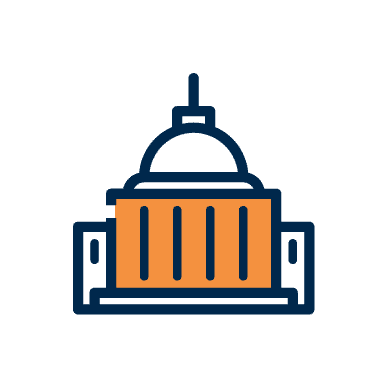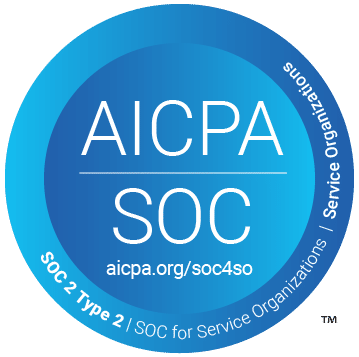The Basics – Failure to Monitor Federal Exclusion Lists Can Hit Your Bottom Line
Health care providers which serve Medicare and Medicaid enrollees have a duty to know if their employees, contractors or potential hires have been excluded by the Health and Human Services Office of the Inspector General (HHS-OIG) from participating in federal healthcare programs. Since the vast majority of US health care providers and organizations have patients covered under some federally funded program, either directly or indirectly, very few health care entities can risk failing to regularly check for exclusions.
The financial impact of failing to monitor the OIG’s List of Excluded Individuals/Entities (LEIE) can be dire. If a health care provider or organization employs or contracts with excluded individuals/entities, and bills for their services or supplies, both federal and state programs will deny payment. In addition, the employer can face hefty fines and penalties for employing excluded providers and billing for their services. Both CMS and state Medicaid contracts expressly prohibit the employing of excluded individuals/entities by health care providers/entities which receive payment from a government program.
Having excluded providers on your payroll is not only bad for business, it is also bad for your patients. Many excluded providers have been convicted of fraud, patient abuse or neglect, or have a felony conviction related to misuse of controlled substances.
A Brief Overview of the OIG Exclusion List
The LEIE was created to assure the integrity of federal healthcare programs such as Medicare and Medicaid. The purpose of the LEIE is both ensure that federal program beneficiaries have access to high quality providers and to prevent any federal funds from flowing to individuals or entities who have demonstrated their disregard for the law and high standards of professional conduct. The LEIE is updated monthly by the OIG to assure the currency of the information available to states and health care individuals and entities regarding exclusion status. While there is no specific federal requirement that the list be checked monthly, there may be state laws that specify frequency. Since the LEIE is updated monthly by the OIG, failure to screen monthly can result in risking retention of an employee or contractor recently excluded by the OIG or state programs.
What Happens if You Employ an Excluded individual/Entity?
The primary effect of employing an excluded individual or entity is that you will not be paid for any services rendered or supplies provided by the excluded employee/ contractor to a patient covered under a federal funded health care program like Medicare or Medicaid. If you submit a claim for such services, it also can result in heightened OIG or state Medicaid program scrutiny for your organization. Worst case scenario in the event that an organization knowingly retained an excluded contractor or workforce member can be exclusion of the organization from federal programs.
How Does Someone Get on the OIG Exclusion List?
An individual or entity can end up in the OIG exclusion list database for a variety of reasons. An OIG exclusion is the most extreme civil sanction that the OIG can impose. Most exclusions by the OIG start with a state’s report of a criminal conviction or professional sanction of a provider/entity. States are required to notify the OIG of such actions taken.
There are two types of exclusions that the OIG can impose. The misconduct or criminal action dictates which type of exclusion applies:
Mandatory Exclusion. If an individual/entity is convicted of the following criminal offenses, the OIG is required by law to impose a minimum 5-year term of exclusion:
Health care fraud related to Medicare, Medicaid, SCHIP, or any state’s healthcare program;
Patient abuse or neglect;
Felony conviction under Federal or State law relating to fraud, theft, embezzlement, breach of fiduciary responsibility, or other financial misconduct in connection with the delivery of a health care item or service, including the performance of management/administrative services relating to the delivery of such items or services; or
Felony conviction under Federal or State law relating to the unlawful manufacture, distribution, prescription or dispensing of a controlled substance, as defined under Federal or State law.
If a provider or entity commits a second criminal offense that requires mandatory exclusion, the minimum term is 10 years. In the event of a third felony conviction, the exclusion is permanent.
Permissive Exclusion. Unlike mandatory exclusions, the OIG has some discretion when imposing permissive exclusions and the term of exclusion. However, it should be noted that even for permissive exclusions, there are legal requirements related to the term of exclusion for certain offenses. Examples of circumstances for permissive exclusion include:
A misdemeanor conviction relating to fraud, theft, embezzlement, breach of fiduciary responsibility, or other financial misconduct in connection with the delivery of any health care item or service;
Profession license suspension or revocation by any State licensing authority for reasons bearing on the individual’s or entity’s professional competence, professional performance or financial integrity. Also, if a provider surrenders his or her license while a formal disciplinary proceeding is underway and it relates to professional competence, professional performance or financial integrity, the OIG may impose a permissive exclusion;
Defaulting on a student loan;
Receiving a misdemeanor conviction for illegally distributing, manufacturing, dealing, or prescribing a controlled substance;
Making any false statement, omission, or misrepresentation of a material fact in any application, agreement, bid, or contract to participate or enroll as a provider of services or supplier under a federal health care program; or
Taking an unlawful kickback;
Submitting false claims or claims containing charges or costs for items or services furnished that are substantially in excess of such individual’s or entity’s usual charges or costs for such items or services; relate to items or services which are medically unnecessary.
Recent OIG Exclusions
The COVID-19 pandemic required that the OIG quickly re-align its priorities to address the exigencies of a unique enforcement challenge. As requirements were relaxed to ease access to care and services during the pandemic, the potential for fraud increased significantly particularly in the area of fraudulent coding and telemedicine. The OIG recognized the risks and in 2020, developed a five year strategic plan to comprehensively address these risks. The collaborative work among federal and state law enforcement to investigate widespread fraud has resulted in several multi-state criminal take-downs leading to significant indictments and potential recoveries.
As noted in the OIG-HHS semi-annual report to Congress for the period of Oct 2021 through March 2022, the OIG excluded 1043 individuals and entities from Medicare, Medicaid, and other Federal health care programs. This number represents a significant increase from the prior reporting period, when 654 individuals and entities were excluded. For the entire 2021 fiscal year ending Sept of 2021, the OIG excluded 1,689 individuals and entities. Therefore, the OIG is on track to meet or exceed 2021 exclusions in the current fiscal year. Most of the exclusions resulted from convictions for crimes relating to Medicare or Medicaid, patient abuse or neglect, financial misconduct, controlled substances, or as a result of license revocation.
How Can an Employer Screen the OIG Exclusion List?
The OIG makes the LEIE available in both an online searchable form as well as a downloadable file;
Online searchable LEIE database
Downloadable LEIE database
Using the employee or job candidate’s name and date of birth, the databases will return a list of potential matches, including individuals with similar names. The employer must then independently verify whether any of the matches pertain to the employee or candidate in question. The LEIE is just one of the two federal lists which must be checked, in addition to state exclusion lists.
Other Important Lists to Check
In addition to the OIG’s Exclusion List, there are many other lists that a health care employer needs to consider:
- Federal SAM.gov database: This is a database developed and maintained by the federal General Services Administration against which federal contractors are required to screen. Unlike the OIG’s LEIE, this list is a compendium of exclusions, suspensions and debarments issued by multiple federal agencies. While not specific to health care, it is considered equally important for federal contractors when hiring or retaining staff who provide services payable by federal funds.
- CMS Medicare lists: There are several lists that CMS has developed to manage Medicare provider information related to exclusion and opt-out.
- Medicare Preclusion List: The CMS Preclusion List is only accessible by Medicare Part C & D health plans, Medicare Cost plans and PACE programs. The CMS Preclusion List must be checked by health plans which offer these Medicare programs. While there is overlap between the CMS Preclusion List and the LEIE, these lists are not wholly concentric because the criteria for inclusion on each differ. Therefore, both lists must be checked by health plans participating in these Medicare programs.
- Medicare Opt-Out: The Medicare Opt-Out List is publicly available. This list, maintained by CMS, is critical to medical practices that treat Medicare patients, since services by provider who has either voluntarily opted out of Medicare participation cannot be billed by a Medicare managed care program.
- State Medicaid lists: Under the Affordable Care Act of 2010, section 6501, if a provider or entity is excluded from one state’s Medicaid program, they must be excluded from participation in Medicare and all Medicaid programs nationwide. While states are required to submit Medicaid exclusion information to the OIG on a monthly basis for inclusion on the LEIE, state Medicaid program audits by the OIG routinely reflect a failure by some states to submit information timely or at all. Therefore, screening monthly against state exclusion lists will ensure that an organization is not inadvertently hiring or retaining a contractor or workforce member who has been excluded elsewhere. According to the 2022 Semi-Annual Report to Congress, the OIG recently completed deployment of a new service for state Medicaid Fraud Control Units (MFCUs) to report convictions through a central web-based portal for exclusions which hopefully may increase the timeliness and incidence of reporting.
For more information about these other lists, please refer to the Streamline Verify website which offers articles about each of these lists.
A Better Business Strategy for Screening
Depending upon the size and complexity of an organization, the time spent to screen the various lists can be more than a full-time job for a staff member. Also, because the potential match rate is hopefully quite low, the time-intensive process can seem both unproductive and is highly repetitive even though it is critical work.
There is a simpler solution, however. Streamline Verify can perform searches across all available databases at both the state and federal levels to assure that any matches or potential matches are identified and verified. Streamline Verify’s screening and monitoring software offer employers the peace of mind knowing that this required monthly function is being performed by experts who have honed their product with over ten years of research and customer feedback. They offer a turnkey screening process that can efficiently screen all of your employees, contractors and potential hires with just one click.










































